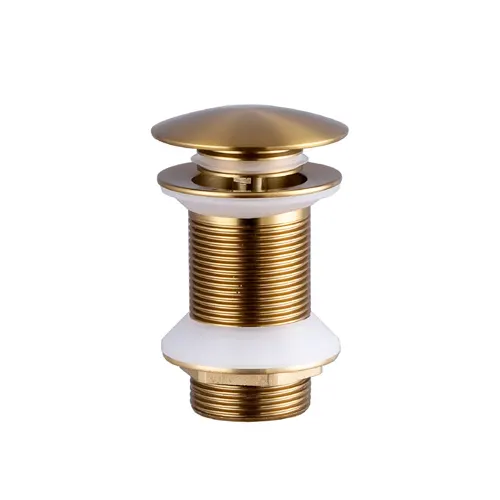
- English
- Español
- Português
- русский
- Français
- 日本語
- Deutsch
- tiếng Việt
- Italiano
- Nederlands
- ภาษาไทย
- Polski
- 한국어
- Svenska
- magyar
- Malay
- বাংলা ভাষার
- Dansk
- Suomi
- हिन्दी
- Pilipino
- Türkçe
- Gaeilge
- العربية
- Indonesia
- Norsk
- تمل
- český
- ελληνικά
- український
- Javanese
- فارسی
- தமிழ்
- తెలుగు
- नेपाली
- Burmese
- български
- ລາວ
- Latine
- Қазақша
- Euskal
- Azərbaycan
- Slovenský jazyk
- Македонски
- Lietuvos
- Eesti Keel
- Română
- Slovenski
- मराठी
- Srpski језик
How Does a Basin Drain Work?
2024-10-17
Understanding the mechanics behind a basin drain is crucial for maintaining the hygiene and functionality of your sink. Whether it's in the kitchen, bathroom, or laundry room, the basin drain plays a vital role in ensuring that water and other debris flow efficiently into the plumbing system without causing any issues.

The Basic Structure of a Basin Drain
At its core, a basin drain consists of several components that work together to ensure proper drainage. The most visible part is the drain opening at the bottom of the sink, where water and debris enter. Below this opening lies a complex system that includes the basin drain itself, connecting pipes, and, importantly, the trap.
The trap, which is shaped like a "U," is a crucial element in the basin drain system. It serves a dual purpose: it catches debris and it prevents unwanted smells and gases from entering your home. This U-shaped design holds a small amount of water, creating a barrier that seals off the drainpipe and acts as a natural odor barrier.
How Water Flows Through a Basin Drain
When water flows from the taps or over the surface of the sink, it makes its way to the basin drain. The drain opening is designed to be wide enough to allow water to flow freely but narrow enough to prevent large debris from passing through. As the water enters the drain, it gravity-feeds down through the piping system, eventually leading to the main sewage line or septic system.
The U-shaped trap plays a significant role in this process. As water flows through the trap, it slows down, allowing heavier particles to settle at the bottom. This helps keep the main drain lines clear of clogs and debris. Additionally, the water that remains in the trap creates a water seal, which is essential for preventing sewer gases and odors from backing up into your home.
The Importance of the Trap in a Basin Drain
The trap is not just a passive component; it actively works to protect your home's air quality. The water seal it creates acts as a natural barrier, ensuring that no smells or gases can escape from the sewage system and enter your living spaces. This is particularly important in areas where the sewage system might be older or less efficient, as these systems are more prone to leaks and odors.
Moreover, the trap also serves as a first line of defense against potential backups. If there's a clog in the main drain line, the trap can catch excess water and debris, preventing it from overflowing back into your sink and causing damage.
Maintaining Your Basin Drain
While the basin drain is designed to be durable and efficient, it still requires regular maintenance to keep it in optimal condition. Over time, debris, hair, soap scum, and other particles can build up in the trap, reducing its efficiency and potentially causing clogs. Regular cleaning and inspections can help prevent these issues.
One common maintenance task is to clean out the trap. This can be done by disconnecting the trap from the drainpipe and removing any debris that has accumulated. It's important to do this carefully to avoid damaging the trap or the water seal.




